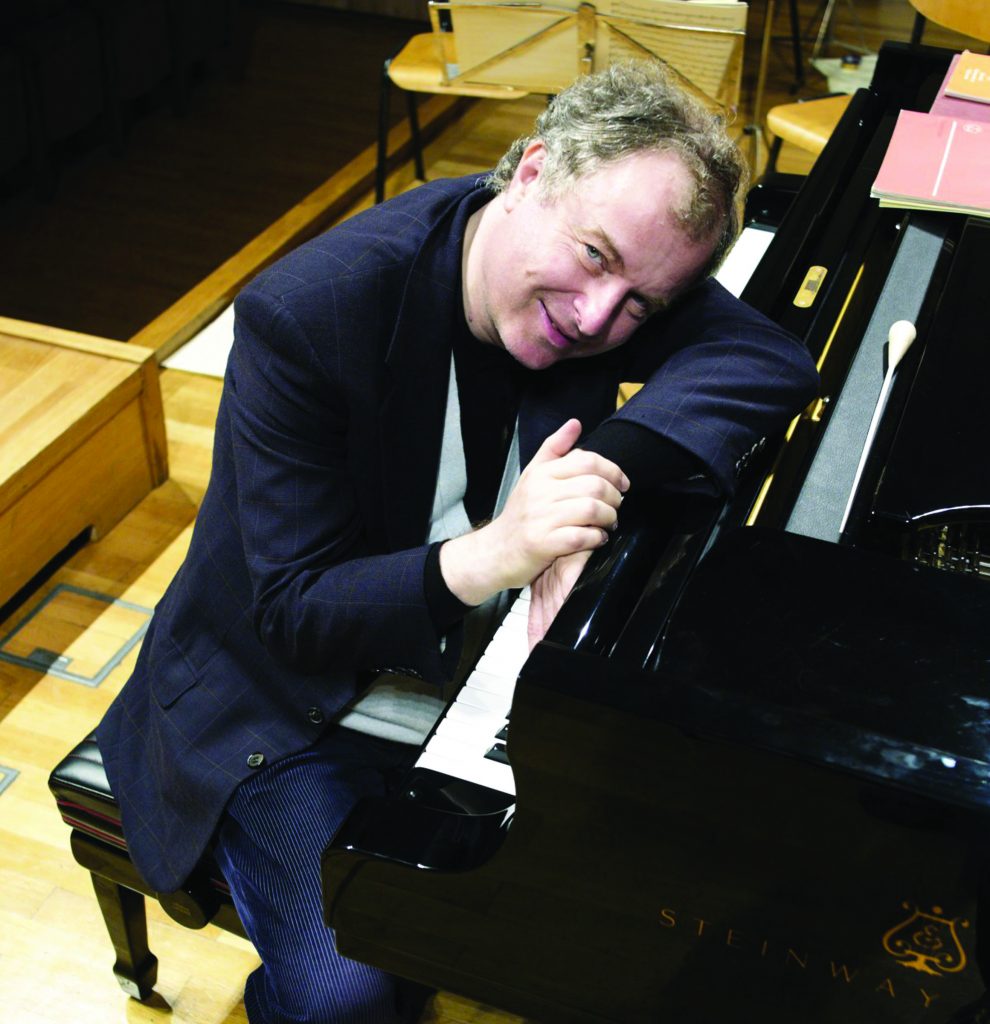András Schiff Illuminates Schumann and Janáček at the Balboa Theatre
The expectations that precede a piano recital by András Schiff are exceedingly high, and his Friday (February 22) recital at the Balboa Theatre easily surpassed them. It had been four years (plus 2 days) since Schiff last played a recital here, and those who appreciate his pellucid, aristocratic approach to the Viennese classical composers could easily become accustomed to more frequent visits.

András Schiff [photo (c.) Dieter Mayr]
Schiff mined lyrical gems from the dark, aggressive labyrinth of Janáček’s brilliant but underappreciated sonata. The work survives in but two movements—in a fit of angry dissatisfaction, the composer himself destroyed his final movement. Schiff found an appealing array of colors for the sonata’s percussive idée fixe that suffuses the brutal first movement as well as the somber Adagio, equally effective stacked up in grating, dissonant layers or floating quietly, surrounded by misty, acerbic clusters. As he amply demonstrated in his consummate account of the Schumann Davidsbündlertãnze, Schiff’s transitions of the jarringly different moods in Janáček’s sonata flew by seamlessly.
An exuberant collection of 18 short, contrasting dance movements, Schumann’s Opus 6 exhibits an unmistakable bipolar organization, an aspect suggested by the motto the composer placed beneath the title of the work’s original 1838 edition: “At every moment, joy and pain are bound together.” Later generations diagnosed Schumann’s whole life as a bipolar enigma.
Combined with the warmth of the elegant Bösendorfer concert grand, Schiff’s refined articulations and luxurious touch made every dance of Schumann’s Opus 6 glow with sensuous appeal. Schiff’s valiant attempt to make Schumann’s First Piano Sonata as compelling as the Davidsbündlertãnze came very close to succeeding. But while it was easy to admire the beauty of this sonata’s effusive themes and Schiff’s deft elucidation of its rich harmonic progressions, Schumann’s modest gift for thematic development gave the impression of treading water too much of the time—instead of that irrefutable forward drive we experience hearing the sonatas of Beethoven.
Schiff opened his program with one of Bach’s lesser-known but richly detailed keyboard offerings, the Partita No. 5 in G Major, BWV 829. Schiff gave each dance an articulation appropriate to its mood and tempo—I especially enjoyed the bounce of his staccato, music-box like presentation of the Tempo di Menuetto and his playful bravura in the breathless outer movements.
Schiff offered two encores: Beethoven’s Sonata in F-sharp Major, Op. 78, and a short Janáček piece, “Good-night.”
This recital was presented by the La Jolla Music Society on Friday, February 22, 2019, in the Balboa Theatre in downtown San Diego. The Society’s next presentation is the Joffrey Ballet on Friday, March 8, 2019, in the San Diego Civic Theatre.
